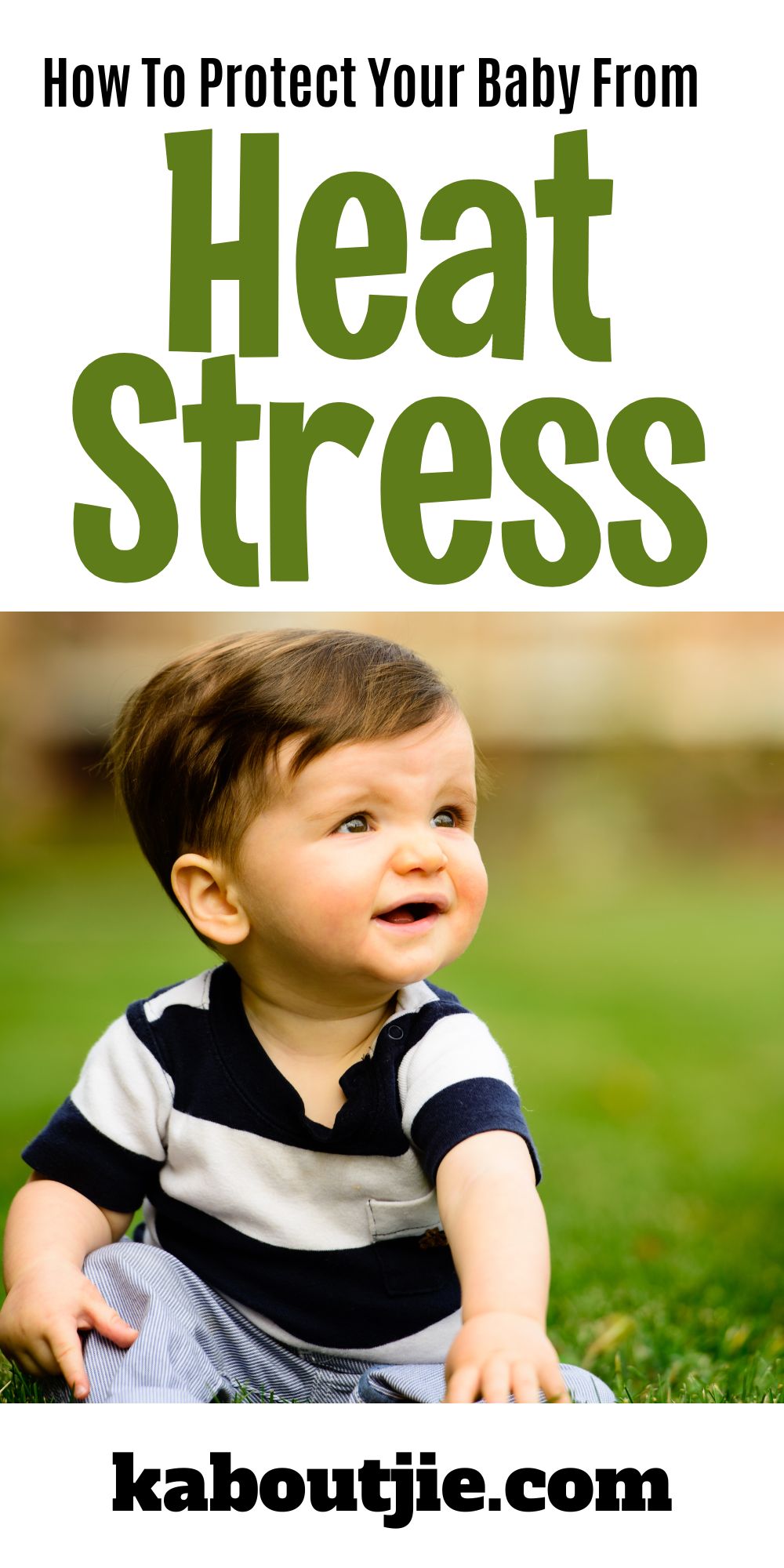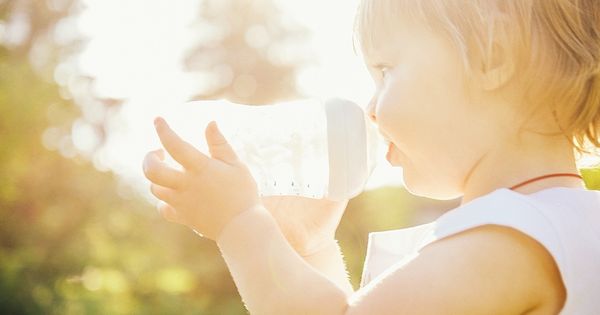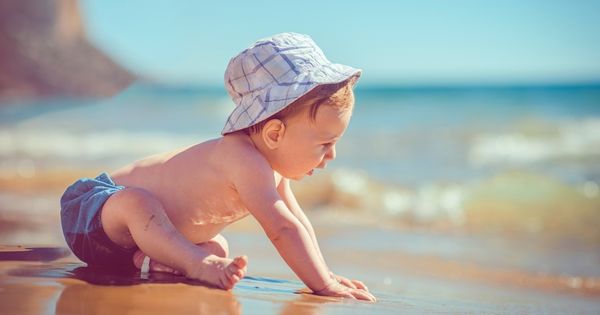Babies and young children are particularly vulnerable to the dangers of heat stress, which is why it’s important for parents and caregivers to be aware of the symptoms and take steps to protect them from the heat.
In this article, we’ll provide some tips on how to keep babies and young children safe in hot weather, as well as what to do if they start showing signs of heat stress.

Sun Safety For Kids
Your baby’s skin is very sensitive and can burn easily, so it’s important to keep them safe in the sun. Here are some tips on how to do this:
Dress your baby in loose, light-coloured clothing that covers their arms and legs. A wide-brimmed hat will protect their face, neck and ears.
Make sure they’re not in the direct sun for too long – shade is best. If it’s hot and sunny, try to keep them out of the heat during the hottest part of the day (11am to 3pm).
Keep their skin hydrated by giving them regular drinks of cool water, even if they’re not thirsty.
If they start to feel hot, give them a cool bath or sponge them down with lukewarm water.
Never leave your baby or child in a car on their own, even for a short time. The temperature can rise very quickly, even when it doesn’t feel that warm outside.
Check their temperature regularly. If it’s very high (over 37.5C in babies under three months, or over 38C in older babies and children), call your local medical services for advice.
If your baby or child has been in the sun and their skin looks red or they’re not themselves, get medical help straight away.
The most important thing is to enjoy the sun safely. Have fun and stay cool!
Avoid Dehydration
Dehydration can happen quickly in young children, so it’s important to keep an eye on how much fluid they’re losing. The best way to do this is to offer regular drinks of water, even if they’re not thirsty.
If they’re not drinking enough fluids, or if they’re urinating less than usual, their nappies are dry or they have a sunken soft spot on their head, they may be dehydrated.
If you think your child is dehydrated, give them fluids little and often to begin with. You can use breast milk, formula milk or water for babies under six months, and water, lower-sugar squash or rehydration drinks for older babies and children.
If they’re vomiting or have diarrhoea, give them small sips of clear fluids frequently. If they don’t improve or start to vomit more, seek medical help immediately.

Heat Exhaustion And Heatstroke
Heat exhaustion is a less serious form of dehydration caused by exposure to high temperatures. Symptoms include tiredness, headaches, nausea and muscle cramps.
If your child has heat exhaustion, move them to a cool place and give them lots of fluids to drink. If they don’t start to feel better soon, seek medical help.
Heatstroke is a more serious condition that can occur if the body overheats and is unable to cool down. It can happen when a child is left in a hot place or is taking part in strenuous activity in high temperatures.
Symptoms of heatstroke include a high body temperature (over 40C), hot, red and dry skin, rapid breathing, confusion and vomiting. If your child has any of these symptoms, call your local medical services immediately – heatstroke is a medical emergency.
There are some simple steps you can take to help prevent your child from getting too hot:
Dress them in loose, light-coloured clothing that covers their arms and legs. A wide-brimmed hat will protect their face, neck and ears.
Make sure they’re not in the direct sun for too long – shade is best. If it’s hot and sunny, try to keep them out of the heat during the hottest part of the day (11am to 3pm).
Keep their skin hydrated by giving them regular drinks of cool water, even if they’re not thirsty.
If they start to feel hot, give them a cool bath or sponge them down with lukewarm water.

Keeping Cool In Hot Weather
Hot weather can be dangerous, especially for babies and young children. Their bodies aren’t very good at regulating their temperature, so they can overheat easily.
You can also help keep your home cool in hot weather:
- draw the curtains or blinds during the day to keep the sun out
- open the windows at night to let cool air in
- use a fan or air conditioning unit to circulate the air
- keep doors and windows shut during the day if it’s hotter outside than inside.
- Babies under six months old should never be left alone in a room with a fan or air conditioning unit on, as they could get too cold.
If you have an infant car seat, cover it with a light cloth or towel to keep your baby cool while you’re out and about.
Never leave your baby or child alone in a car, even for a short time. The temperature in a parked car can rise very quickly, even on a cool day.
Signs Of Heat Exhaustion
If your child has heat exhaustion, move them to a cool place and give them lots of fluids to drink. If they don’t start to feel better soon, seek medical help.
Heatstroke is a more serious condition that can occur if the body overheats and is unable to cool down. It can happen when a child is left in a hot place or is taking part in strenuous activity in high temperatures.
Symptoms of heatstroke include a high body temperature (over 40C), hot, red and dry skin, rapid breathing, confusion and vomiting. If your child has any of these symptoms, call your local medical services immediately – heatstroke is a medical emergency.
 Kaboutjie SA Mommy Blogs by Lynne Huysamen
Kaboutjie SA Mommy Blogs by Lynne Huysamen





So good to know for up coming summer season with a baby born in winter